Abstract
IgG subclasses of antibodies to hepatitis B e antigen (anti-HBe) complexed to HBeAg were determined in 126 HBsAg-positive sera. In the assay HBeAg complexes were bound to microtitre plates by monoclonal anti-HBe and indicated by biotinylated monoclonals to each of the four human IgG subclasses. To evaluate the specificity of the complexed IgG, serum dilutions were also tested for HBeAg and for subclasses of anti-HBe IgG. Two groups of sera were investigated: (i) 64 sera from 64 HBsAg carriers; and (ii) 62 sera from 13 HBeAg-positive patients, of whom five seroconverted to anti-HBe. At least four sera were available from each of these patients. Complexed anti-HBe IgG was detected in 22 of 30 HBeAg-positive, and in three of HBeAg-negative carrier sera. There was no significant association between presence of complexed anti-HBe and levels of HBeAg in these sera. Complexes with multiple subclass composition were found in 13 of the 25 sera with complexed anti-HBe. The most common IgG subclasses found complexed to HBeAg were IgG1 (75%) and IgG4 (67%). A significant association (P less than 0.05) was found between the presence of free and complexed anti-HBe IgG1 in the carrier sera, indicating that the IgG1 antibodies, complexed to HBeAg, were specific for HBeAg. In the five patients who seroconverted to anti-HBe, anti-HBe IgG1 was detected in the HBeAg-positive phase before seroconversion. In the eight patients with persistent HBeAg antigenemia, free anti-HBe IgG1 was detected in only two sera from two different patients. In one patient, complexed anti-HBe IgG1/IgG4 was detected in all serum samples drawn during a period of 111 months. In conclusion, complexed anti-HBe might be detected several years before apparent seroconversion to anti-HBe in conventional anti-HBe assays. In contrast 'free' anti-HBe IgG1, when detected in HBeAg-positive sera with our anti-HBe subclass assay, seemed to signal ensuing apparent seroconversion to anti-HBe.
Full text
PDF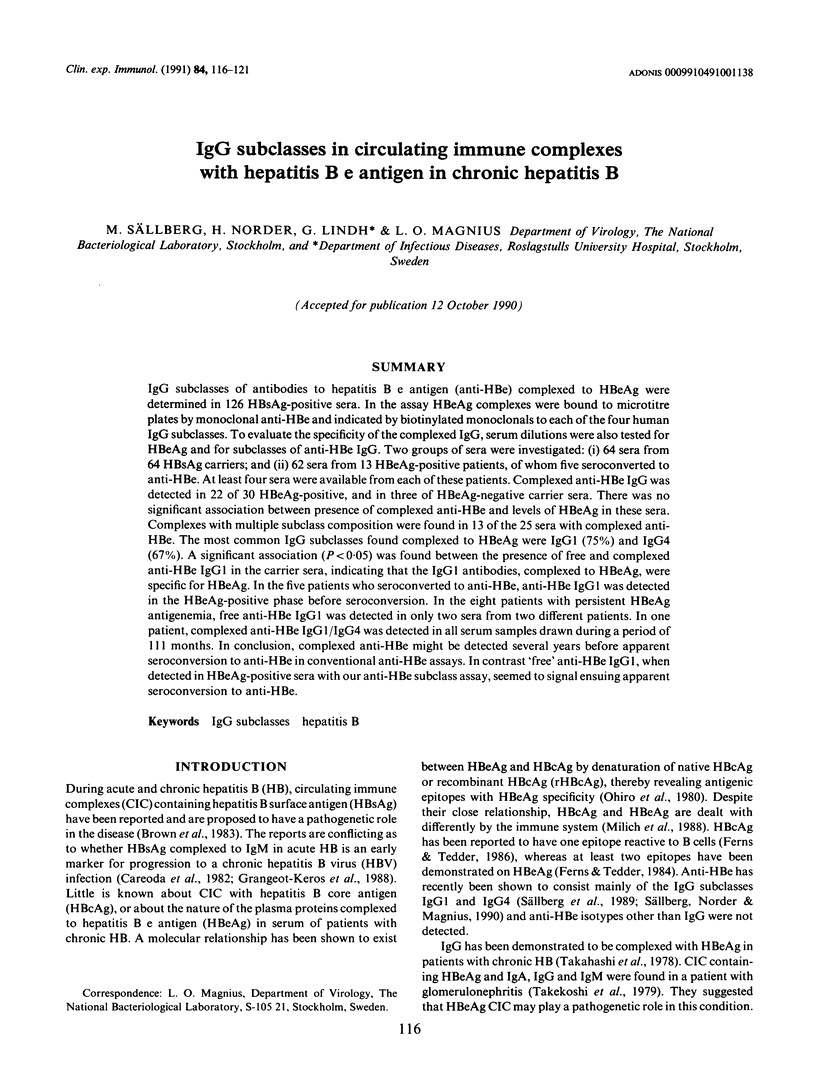
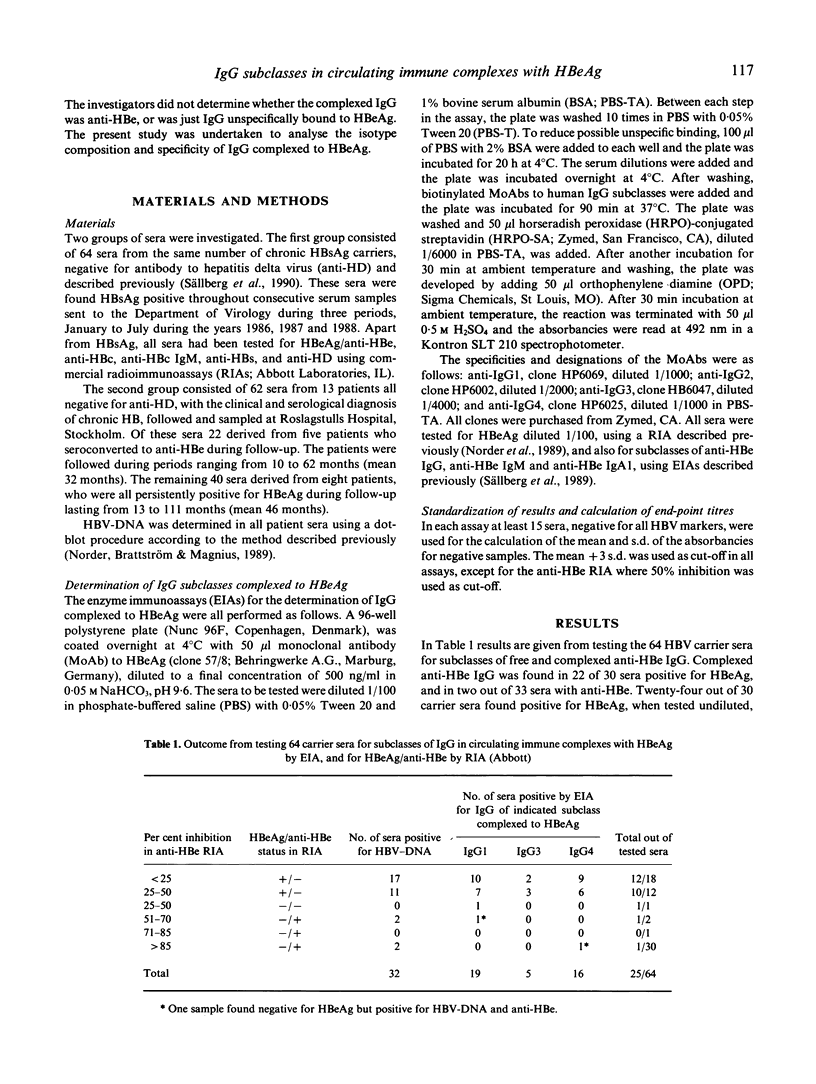
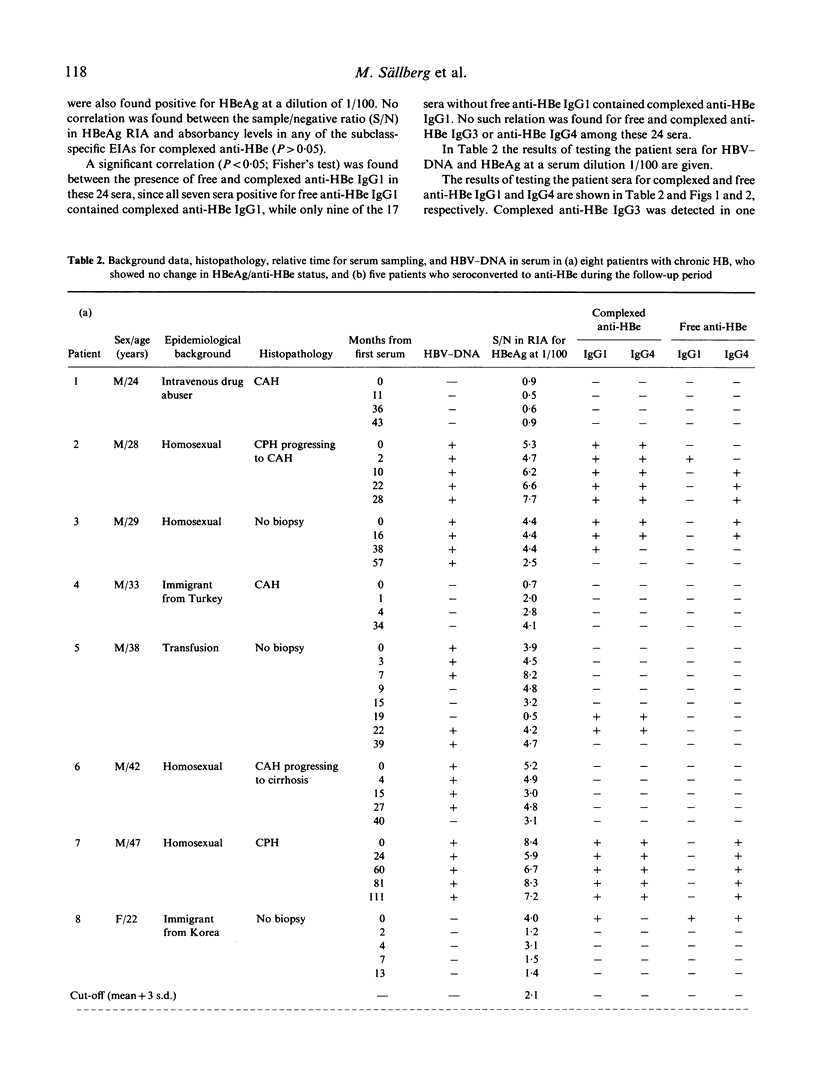
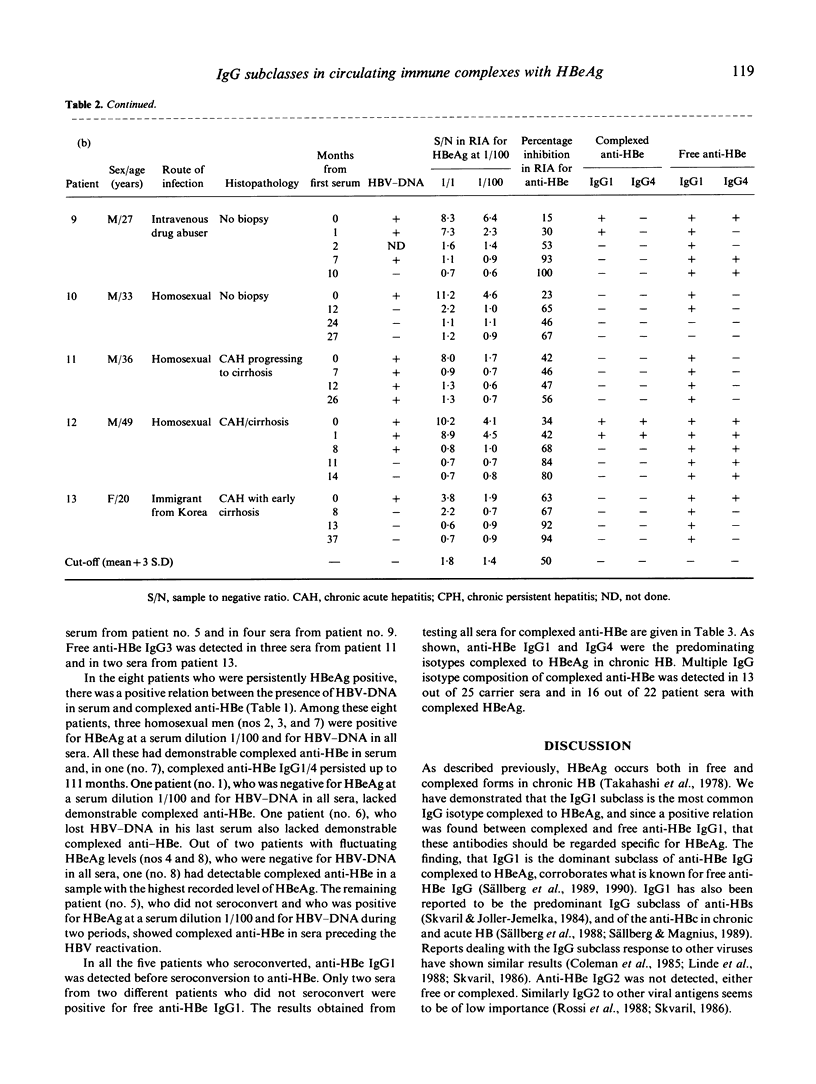
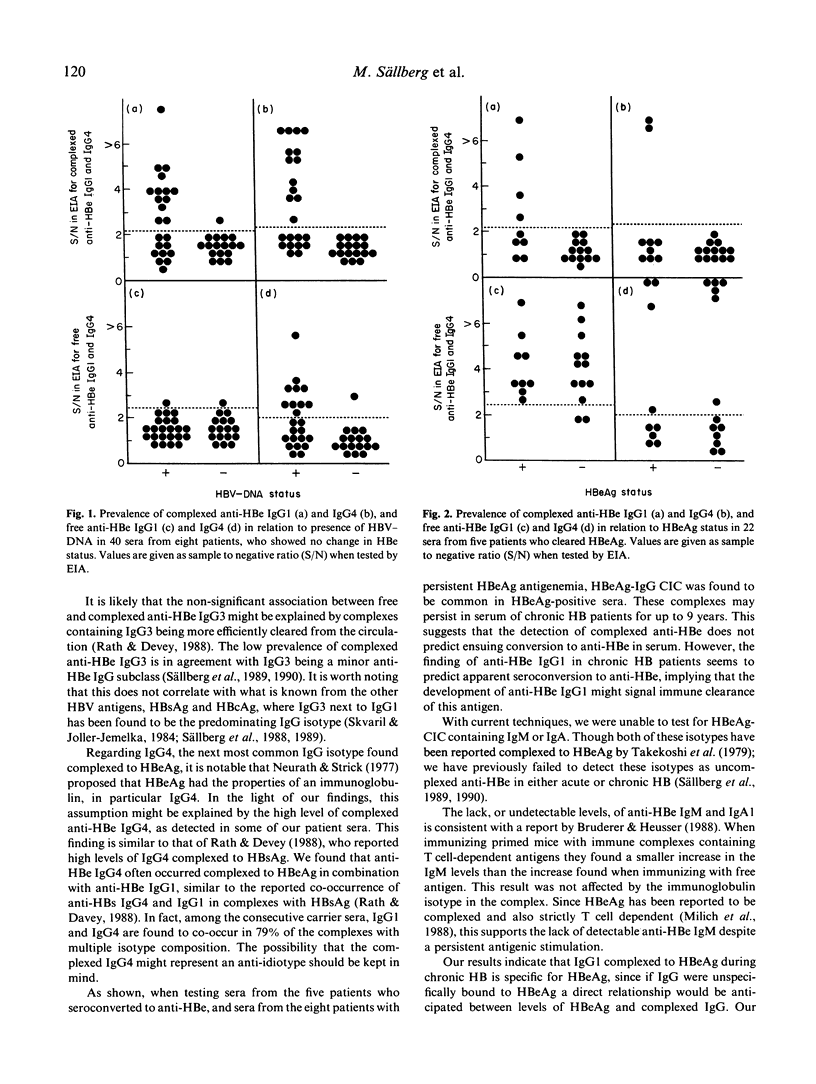
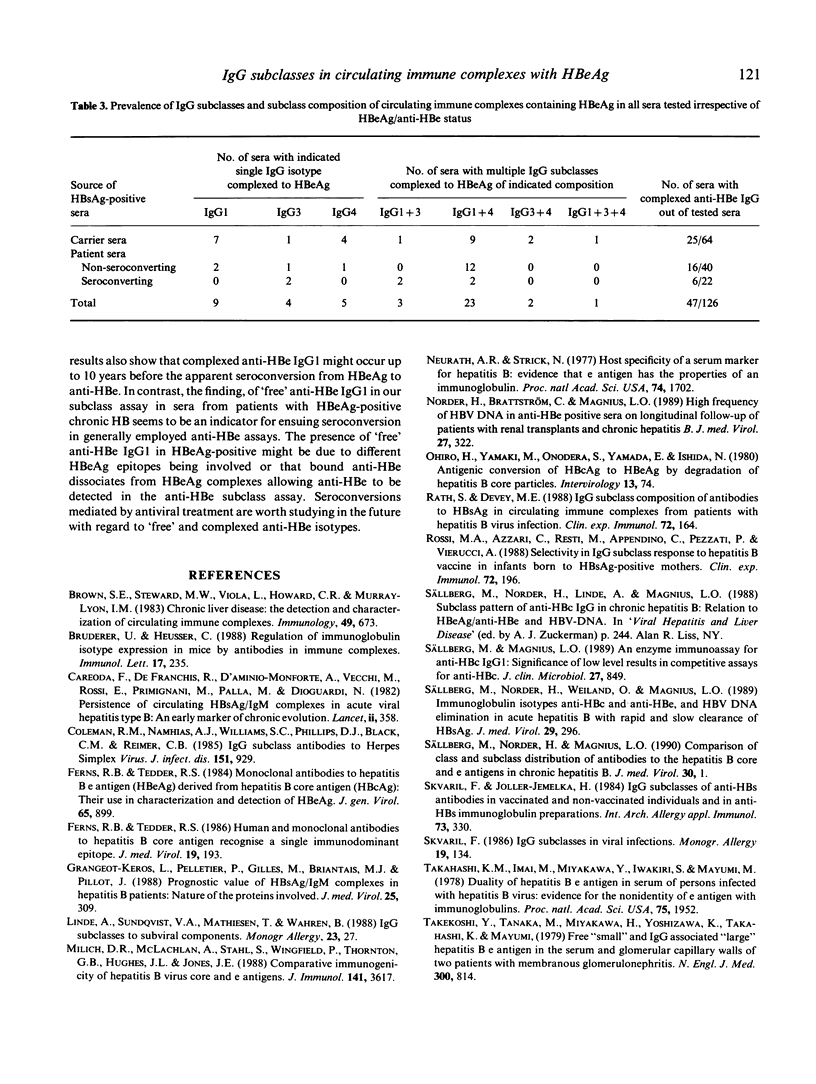
Selected References
These references are in PubMed. This may not be the complete list of references from this article.
- Brown S. E., Steward M. W., Viola L., Howard C. R., Murray-Lyon I. M. Chronic liver disease: the detection and characterization of circulating immune complexes. Immunology. 1983 Aug;49(4):673–683. [PMC free article] [PubMed] [Google Scholar]
- Bruderer U., Heusser C. Regulation of immunoglobulin isotype expression in mice by antibodies in immune complexes. Immunol Lett. 1988 Mar;17(3):235–240. doi: 10.1016/0165-2478(88)90035-1. [DOI] [PubMed] [Google Scholar]
- Careoda F., de Franchis R., D'Arminio Monforte A., Vecchi M., Rossi E., Primignani M., Palla M., Dioguardi N. Persistence of circulating HBsAg/IgM complexes in acute viral hepatitis, type B: an early marker of chronic evolution. Lancet. 1982 Aug 14;2(8294):358–360. doi: 10.1016/s0140-6736(82)90549-9. [DOI] [PubMed] [Google Scholar]
- Coleman R. M., Nahmias A. J., Williams S. C., Phillips D. J., Black C. M., Reimer C. B. IgG subclass antibodies to herpes simplex virus. J Infect Dis. 1985 May;151(5):929–936. doi: 10.1093/infdis/151.5.929. [DOI] [PubMed] [Google Scholar]
- Ferns R. B., Tedder R. S. Human and monoclonal antibodies to hepatitis B core antigen recognise a single immunodominant epitope. J Med Virol. 1986 Jun;19(2):193–203. doi: 10.1002/jmv.1890190213. [DOI] [PubMed] [Google Scholar]
- Ferns R. B., Tedder R. S. Monoclonal antibodies to hepatitis Be antigen (HBeAg) derived from hepatitis B core antigen (HBcAg): their use in characterization and detection of HBeAg. J Gen Virol. 1984 May;65(Pt 5):899–908. doi: 10.1099/0022-1317-65-5-899. [DOI] [PubMed] [Google Scholar]
- Grangeot-Keros L., Pelletier G., Briantais M. J., Pillot J. Prognostic value of HBsAg/IgM complexes in hepatitis B patients: nature of the proteins involved. J Med Virol. 1988 Jul;25(3):309–315. doi: 10.1002/jmv.1890250308. [DOI] [PubMed] [Google Scholar]
- Linde A., Sundqvist V. A., Mathiesen T., Wahren B. IgG subclasses to subviral components. Monogr Allergy. 1988;23:27–32. [PubMed] [Google Scholar]
- Milich D. R., McLachlan A., Stahl S., Wingfield P., Thornton G. B., Hughes J. L., Jones J. E. Comparative immunogenicity of hepatitis B virus core and E antigens. J Immunol. 1988 Nov 15;141(10):3617–3624. [PubMed] [Google Scholar]
- Neurath A. R., Strick N. Host specificity of a serum marker for hepatitis B: evidence that "e antigen" has the properties of an immunoglobulin. Proc Natl Acad Sci U S A. 1977 Apr;74(4):1702–1706. doi: 10.1073/pnas.74.4.1702. [DOI] [PMC free article] [PubMed] [Google Scholar]
- Norder H., Brattström C., Magnius L. High frequency of hepatitis B virus DNA in anti-HBe positive sera on longitudinal follow-up of patients with renal transplants and chronic hepatitis B. J Med Virol. 1989 Apr;27(4):322–328. doi: 10.1002/jmv.1890270412. [DOI] [PubMed] [Google Scholar]
- Ohori H., Yamaki M., Onodera S., Yamada E., Ishida N. Antigenic conversion from HBcAg to HBeAg by degradation of hepatitis B core particles. Intervirology. 1980;13(2):74–82. doi: 10.1159/000149110. [DOI] [PubMed] [Google Scholar]
- Rath S., Devey M. E. IgG subclass composition of antibodies to HBsAg in circulating immune complexes from patients with hepatitis B virus infections. Clin Exp Immunol. 1988 Apr;72(1):164–167. [PMC free article] [PubMed] [Google Scholar]
- Rossi M. E., Azzari C., Resti M., Appendino C., Pezzati P., Vierucci A. Selectivity in IgG subclass response to hepatitis B vaccine in infants born to HBsAg-positive mothers. Clin Exp Immunol. 1988 May;72(2):196–200. [PMC free article] [PubMed] [Google Scholar]
- Skvaril F. IgG subclasses in viral infections. Monogr Allergy. 1986;19:134–143. [PubMed] [Google Scholar]
- Skvaril F., Joller-Jemelka H. IgG subclasses of anti-HBs antibodies in vaccinated and nonvaccinated individuals and in anti-HBs immunoglobulin preparations. Int Arch Allergy Appl Immunol. 1984;73(4):330–337. doi: 10.1159/000233493. [DOI] [PubMed] [Google Scholar]
- Sälberg M., Norder H., Weiland O., Magnius L. Immunoglobulin isotypes of anti-HBc and anti-HBe and hepatitis B virus (HBV) DNA elimination in acute hepatitis B. J Med Virol. 1989 Dec;29(4):296–302. doi: 10.1002/jmv.1890290414. [DOI] [PubMed] [Google Scholar]
- Sällberg M., Magnius L. O. Enzyme immunoassay for anti-hepatitis B core (HBc) immunoglobulin G1 and significance of low-level results in competitive assays for anti-HBc. J Clin Microbiol. 1989 May;27(5):849–853. doi: 10.1128/jcm.27.5.849-853.1989. [DOI] [PMC free article] [PubMed] [Google Scholar]
- Sällberg M., Norder H., Magnius L. O. Comparison of class and subclass distribution of antibodies to the hepatitis B core and B e antigens in chronic hepatitis B. J Med Virol. 1990 Jan;30(1):1–6. doi: 10.1002/jmv.1890300102. [DOI] [PubMed] [Google Scholar]
- Takahashi K., Imai M., Miyakawa Y., Iwakiri S., Mayumi M. Duality of hepatitis B e antigen in serum of persons infected with hepatitis B virus: evidence for the nonidentity of e antigen with immunoglobulins. Proc Natl Acad Sci U S A. 1978 Apr;75(4):1952–1956. doi: 10.1073/pnas.75.4.1952. [DOI] [PMC free article] [PubMed] [Google Scholar]
- Takekoshi Y., Tanaka M., Miyakawa Y., Yoshizawa H., Takahashi K., Mayumi M. Free "small" and IgG-associated "large" hepatitis B e antigen in the serum and glomerular capillary walls of two patients with membranous glomerulonephritis. N Engl J Med. 1979 Apr 12;300(15):814–819. doi: 10.1056/NEJM197904123001502. [DOI] [PubMed] [Google Scholar]


